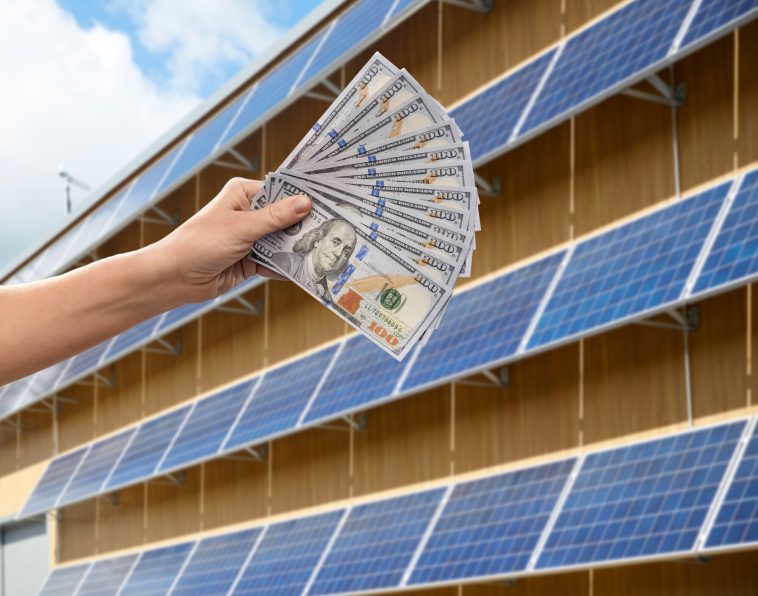Many people switch to solar power for the benefits they receive, but they usually have a hefty price. Although you can take out a loan for it, you might wonder how you get the most from solar panel financing rates.
When choosing a solar plan, you should consider a couple of factors, from the principal payments to loan fees. It helps you find a financing option you feel comfortable with and provides various perks.
So, how can you make this happen? Here are some ways to get the most out of solar financing.
Quick Tips to Find The Right Financing Option
Sometimes, all it takes to find a financing option that fits you is checking your options. But when you’re stuck between a couple of choices, you consider a few things to get a clearer picture of what works best. It goes from costs and benefits to flexibility and comfort.
Here are some quick tips that could help you:
Weigh the Pros and Cons
Every solar panel financing plan has pros and cons. Whichever has more impact depends on your situation, so it’s best to go through all of them.
Let’s say you want to own a solar power system but don’t have enough cash to pay for it upfront. At the same time, you don’t mind a few increases to the payment here and there. In that case, a loan works best for you.
But if you prefer to get cheaper options and don’t mind not getting the extra incentives, you can go for solar power rentals.
Consider Your Budget
Your ability to pay now or later reflects what plan you should get. If you can afford the cost of an entire solar power system now, you can purchase it in cash. Otherwise, you can get a loan but deal with a few increases to your total costs.
You can even rent the system or pay only for the power you consume. Although it doesn’t grant long-term savings, it’s the most cost-effective option if you lack funds now.
Look Into the Benefits
Each financing option has different perks. To maximize your solar panel financing rates, you want to know what benefits you can get with your choice.
For example, paying the whole system upfront means you don’t have to worry about extra payments later and get solar incentives. On the other hand, a loan allows you to have incentives but pay extra on top of the system costs.
Likewise, if you can’t afford to buy the system, you can save on power costs by renting it. However, you won’t be eligible for incentives.
Check the Financing Flexibility
Another thing you want to consider is how flexible it feels for you financially. Does it compromise your current finances? Will it affect how you manage your money?
If you want to get the most from your solar panels, you should be sure it lets you save on costs and gives you fewer worries. So, if your financing option doesn’t make you feel that way, you might have to reconsider.
Solar Panel Financing Options
To be sure you’re getting the most out of solar financing, you should know your options. The perks vary on your needs and what you can afford, so it’s best to weigh the pros and cons of each one.
The following are the options you can consider:
Cash Purchase
You can buy solar panels in full upfront using cash or cards. Making this payment eliminates extra fees, like interest rates, loan fees, or credit checks.
Since you pay for the whole solar panel system early on, paying with cash gives the best return on investment. At the same time, you get the maximum long-term savings and benefit from it years earlier.
A cash purchase also means you own a solar power system, so solar incentives and credits will go to you. This way, you get to save much more and get compensation for it. Likewise, it increases the value of your property and allows you to transfer the system for a home sale.
But paying for a solar power system in cash means you should have a large sum on hand. Usually, the system will cost you around $15,000 to $25,000 but may go up to $30,000 depending on extra fees.
Additionally, you will most likely cover repairs and upgrades to your system. Most solar companies offer lengthy warranties, but you should prepare for extra payments once it ends. Maintenance fees also last only until the warranty period, so you should cover the remaining years after that.
Personal Loan
Another common type of financing for solar panels is getting a personal loan. They come in all shapes and sizes, depending on your needs. But note that a personal loan is usually unsecured and has fixed interest rates with varying monthly payments. It also means you should have a good credit score to qualify.
Taking out a personal loan to pay for a solar panel system allows you to pay them off without requiring you to make an upfront investment. The catch is that you should make monthly payments with an additional cost over a fixed period.
A personal loan for solar panels still means you’re the legal owner of the system, so you can still get the incentives. This way, you can reduce the total cost you have to pay for the solar panel loan. It also benefits your home by adding property value and making ownership transfers easier.
With these loans, you should note that how much you pay may increase because of the annual percentage rate. Your installation costs might be higher based on your loan amount, terms, and interest rate, even after applying the solar incentives.
So, remember to review the loan details carefully. You want to make sure you check off the following before confirming with your provider:
- Low-interest rates
- The low annual percentage rate
- Comfortable repayment terms
- Feasible monthly loan payment
- Extra benefits, if any
Home Equity Loan and HELOC
Home equity loans and HELOCs refer to mortgages that allow homeowners to access their property equity and use it for other purposes.
With a home equity loan, you can receive around 85% of your home’s value in cash. But when you pay it back, you should also cover fixed interest rates and make your payment monthly.
On the other hand, a HELOC or home equity line of credit acts like a credit card. It gives you access to credit amounting to up to 90% of your home’s equity. You can withdraw from that line of funds by contacting your provider.
A HELOC also comes with varying interest rates. Your monthly payments will likely shift every now and then.
Usually, a home equity loan is ideal if you want to borrow a fixed amount. If you aren’t sure how much to take out, consider a HELOC instead.
It is also good to note that withdrawing reduces your home equity. Moreover, it requires you to pay off two mortgages simultaneously. Because of those terms, many recommend avoiding this option if you can’t repay it since it puts your home on the line.
Contractor Financing
You can find solar companies that offer in-house or third-party solar panel financing. This option allows you to qualify for lower interest rates than other loans.
Note that with this option, your borrowing amount, interest rates, and payment terms vary with your provider. It is also vital to be sure you qualify for a solar loan before you try this financing option.
If you intend to finance your solar panels using this, it’s best to work with an installation company that offers it. This way, you can streamline the process and complete it faster.
You might also want to note that longer repayment terms mean lower minimum monthly payments. The downside is that it may amount to a larger sum once the loan ends. Additionally, your lender might ask you to pay other fees aside from the typical loan add-ons.
Solar Panel Lease
Homeowners can get a solar lease if they can’t afford to pay for the solar power system in cash or through a loan. It’s like renting the system directly from an owner or a solar company.
You will need a good credit score to see if you qualify for the leasing program. It also determines how much you should pay for the initial payment. Here, you get a long-term lease with a fixed monthly rate.
Most solar leases last around 20 to 25 years. During that period, the solar company will cover all system’s maintenance needs and repairs. So, you only have to worry about making the monthly payment to use its power.
If you choose a solar lease, note that you won’t be qualified to receive solar incentives and tax benefits. The condition is that you rent the system, so the ownership still stays with the solar company. In that case, you won’t receive as much financial benefit as you would if you owned the system.
Although a solar lease allows homeowners to make lower payments, it doesn’t give as much return. You still get the benefits of renewable energy services. But it would feel like paying the original cost of the solar power system, but in smaller increments and for a longer period.
Moreover, you should pay off the remainder of the lease if you plan on selling your home with the system still attached. Otherwise, you should find a buyer willing to take over the lease with the property. It also takes a while to process the transfer if your buyer doesn’t qualify for the leasing program.
Power Purchase Agreement
Another type of solar lease is called a power purchase agreement. With this option, you make payments based on how much energy you consume each month rather than using the system. So, expect the costs to depend on the company’s kilowatt-per-hour rate.
A few of the benefits you can get with a PPA include the following:
- Financing option with the lowest monthly payment
- Cheaper than regular electricity utility rates
- Covers maintenance and repairs
- No up-front costs
- No commitment to own panels
Despite its benefits over most financing options, it isn’t always available. Only a select number of states can offer a power purchase agreement. It is also likely to come with several restrictions based on your state.
Note that power purchase agreement payments are never fixed. Your bill will vary based on how much power you use. Instead, it uses a price escalator that indicates the price increase of solar energy each year.
Additionally, if you don’t get enough energy to power your home, you might have to use energy from the grid. So, you could end up paying two power-related bills each month: one for your PPA and another for your electric company.
Remember that a PPA doesn’t give you solar power system ownership. It means you don’t get financial benefits, home value increase, or solar incentives.
Government Loans
You can also consider applying for government loans to save on your solar costs. If you already own a property, you can try Fannie Mae’s HomeStyle Energy Program to get financing for solar panels with clean energy upgrades up to 15% of your home’s value.
It allows you to finance energy-efficient upgrades to replace the need for home equity credit and unsecured loans. But if you already have payments under options, the HomeStyle Energy Program allows you to refinance or roll the loan into a possibly cheaper mortgage.
Get the Most From Solar Panel Financing Rates Today
Knowing what financing option suits you best is the key to maximizing your solar panel financing rates. Whichever you choose usually varies on what you can handle, the plan’s availability, and the perks you receive.
Research and compare all available financing options and act quickly to lock in the best deal. What are you waiting for? Get started today to take advantage of the sun’s energy!
Was this article helpful? If so, make sure to check out the rest of our site for more informative content.




